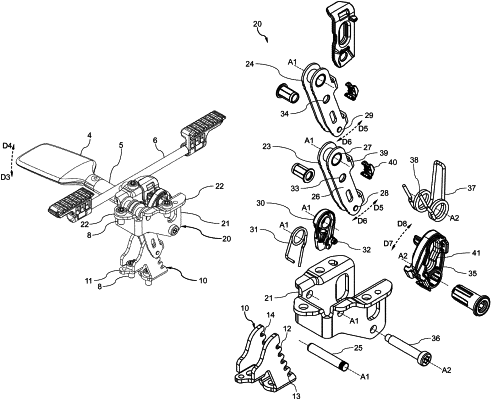| CPC A47C 1/026 (2013.01) [A47C 1/03272 (2013.01); A47C 3/026 (2013.01); A47C 3/03 (2013.01); A47C 7/004 (2013.01); A47C 7/44 (2013.01); A47C 7/443 (2013.01)] | 11 Claims |

|
1. A tilt locking device for a chair, comprising
a housing configured for connection to one of a seat and a frame; characterized by a first rotatable locking member, rotatable about a first axis and biased in a first direction about the first axis in a direction away from a notch member, the first rotatable locking member is configured for interlocking with the notch member;
a second rotatable locking member rotatable about the first axis independently of the first rotatable locking member and biased in the first direction about the first axis;
an intermediate member biasing the first and second rotatable locking members in the first direction, the intermediate member is biased in the first direction by an intermediate member spring;
a rotatable activation member rotatable about a second axis, the rotatable activation member is configured to abut and rotate the first and second rotatable locking members in a second direction opposite the first direction into interlocking one of the first and second rotatable locking members with the notch member;
the rotatable activation member comprises an activation member spring comprising two spring abut portions that are configured to abut and exert a force on each corresponding rotatable locking member at an abutment portion for resiliently abutting and rotating the first and second locking members, the biasing force of the activation member spring exceeds the biasing force of the intermediate member spring such that when the rotatable activation member is rotated in a first direction about the second axis into abutment with the rotatable locking members, the rotatable locking members are rotated in the second direction about the first axis.
|